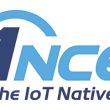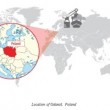

1NCE, reportedly the first Tier 1 IoT (Internet of Things) carrier providing an IoT connectivity Flatrate (powered by Deutsche Telekom), has started operations in the emerging IoT markets of Russia, Belarus and the Ukraine. (more…)
September 4, 2018
Posted by: Anasia D'mello

Event organisers announced the lineup of more than 60 presenters, session tracks, tutorials and panel sessions for Fog World Congress 2018, produced by the OpenFog Consortium in collaboration with (more…)
August 27, 2018
Posted by: Anasia D'mello
XIAMEN, CHINA April 19, 2018–Ursalink (www.ursalink.com), an innovative manufacturer of the most reliable and robust M2M/IoT products, will announce the worldwide release of its newfangled networking solution, LoRaWAN gateway, at NXT Asia 2018 held June 26 -28, 2018 at Marina Bay Sands, Singapore.
LoRaWAN, in short, is a Low Power Wide Area Network specification providing seamless interoperability among smart things and giving back the freedom to users, developers, and businesses. It creates a new generation of sophisticated security, low power consumption, unmatched expandability and wide network coverage for the horizontal and vertical use.
The Ursalink LoRaWAN Gateway unites compelling technology with forward thinking design to influence the positive development of IoT, sharing insights into the benefits of wireless networking solution for enterprise’s long-term goals. It is fully interoperable with LoRaWAN™ compliant device, the capabilities of automated Ethernet/LTE failover and rugged enclosure design allow Ursalink LoRaWAN Gateway to integrate easily across diverse operation environments. With multiple 3rd party network servers, it becomes an ideal choice for public or private LoRaWAN IoT deployment.
During the trade show, Ursalink will be exhibiting at Booth 5N4-01 on Level 5 and display a broad array of new possibilities for your IoT projects developments.
It would be a great pleasure to meet you at NXT Asia 2018 and delves into this interconnected world together.
What’s amazing about Ursalink LoRaWAN Gateway:
Durable and sturdy design: IP67 enclosure with waterproof certified
Redundant connection: automated Ethernet/LTE failover leaves offline aside
High receiver sensitivity: powerful antennas together with strong modules integration
Universal networking flexibility: Integrates preset for multiple external LoRa Network Server, and adapts to global radio frequency
It empowers businesses in the areas of:
Energy
Smart Grid
Smart cities
Industrial monitoring
Home and building automation
About Ursalink
Ursalink is a professional high-tech enterprise specializing in the design and manufacture of best-in-class industrial-grade M2M/IoT hardware and solutions with superior performance, relentless reliability and unquestioned security for the global market. With a deep, rich suite of IoT and M2M network services, Ursalink offers true global connectivity, with high-quality integration solutions for customers from all industries. For more information, please visit www.ursalink.com.
In the recent times, the global Internet of things (IoT) at workplace market witnessed tremendous growth, thanks to the increasing adoption of IoT at workplace technology among consumers due to various benefits it offers, such as the lowered power consumption and reduced cost for an extended coverage area. According to Transparency Market Research (TMR), the global market is expected to continue witnessing high growth.
Increasing Penetration of Technology to Support Market’s Growth
The increasing penetration of technology, even to the remote areas, is the main factor that is influencing the market for IoT at workplace across the world. The rising uptake of IoT at workplace for infrastructural development and the construction of smart cities is also boosting the growth of this market substantially. The augmenting awareness level of consumers regarding the benefits of IoT at workplace technology, such low power consumption, lower cost of components, easy deployment into existing cellular network, excellent extended array in buildings and underground, and the escalated reliability and network security, is likely to support this market in the years to come.
Demand for Energy Management Systems for Workplace Use to Remain High
Smart lighting, energy management systems, security and access control, HVAC control, audio video conferencing system are the main products of IoT at workplace. Among these, the energy management systems segment is reporting the most prominent growth in the global market. This growth can be attributed to the increasing uptake of IoT at workplace technology across a number of industry verticals. However, the security and access control segment is likely to surpass the energy management systems segment in terms of growth rate over the next few years.
North America to Continue at Top
North America, Asia Pacific, Europe, the Middle East and Africa, and South America are the main geographical segments of the global IoT at workplace market. North America, among these, has surfaced as the key contributor to the global market, owing to the presence of a large pool of leading market players. The early uptake of IoT at workplace in this region has also aided the Europe market for IoT at workplace considerably.
Amongst other geographical segments, Asia Pacific has emerged as the most promising regional market for IoT at workplace. This regional market is likely to expand at an exceptional CAGR, thanks to the increasing government investments for the modification of current locales into smart cities.
The leading players, such as ABB Ltd., Cisco Systems Inc., Crestron Electronics, Honeywell International, and various others, are increasing focusing on regional expansion for the development of their business. Partnerships and collaborations are also being taken up by these players to strengthen their position in the global IoT at workplace market.
For more market insights, Get Brochure Report: IoT at Workplace Market – Global Industry Analysis, Size, Share, Growth, Trends and Forecast 2017 – 2025
July 5, 2018
Posted by: IoT global network

Vasona Networks, Inc.®, which provides mobile edge solutions for better user experiences and network capital efficiency, announced a partnership effort with F5, which makes apps go faster, smarter and safer for the world’s service providers. The companies will work together to power virtual multi-access edge computing (MEC) deployments for mobile operators at scale. (more…)
June 27, 2018
Posted by: Zenobia Hegde

Why is it that some solution vendors ‘get’ the Internet of Things (IoT) and others don’t? Is it an understanding of what customers want? Jeremy Cowan is hearing conflicting messages as network operators admit IoT is failing to meet their expectations, while solution vendors say it works well. (more…)
June 20, 2018
Posted by: Zenobia Hegde

According to a new research report from the IoT analyst firm Berg Insight, the number of devices managed on third-party connectivity management platforms (CMPs) will grow at a CAGR of 30.3% from 120 million in 2017 to reach 440 million by 2022. This accounted for about 18% of the total installed base of cellular IoT devices in 2017. (more…)
June 15, 2018
Posted by: Zenobia Hegde

More than 84% of world trade is mobilised by maritime transport. The integration of land transport with ports has become essential and has had an impact in the complexity of logistics connections. The dynamic nature and importance of maritime transport have repercussions on the environment in the form of noise and air pollution or traffic congestion, among others. (more…)
June 5, 2018
Posted by: Zenobia Hegde

At Small Cells World Summit in London, Ranplan Wireless will be featuring Ranplan Professional, its flagship product that bridges the gap between indoor and outdoor design to plan and deploy Small Cell, DAS and Wi-Fi networksacross in-building and densified urban environments in coordination. (more…)
May 21, 2018
Posted by: Zenobia Hegde

Huawei and Groupe PSA showcased a DS 7 CROSSBACK, the first connected vehicle resulting from their partnership covering all of the Group’s connected vehicles, announced in November 2017. Debuting in Europe at Huawei’s exhibition booth during HANNOVER MESSE 2018, DS 7 CROSSBACK is the first vehicle to use Groupe PSA’s Connected Vehicle Modular Platform (CVMP) (more…)
April 25, 2018
Posted by: Zenobia Hegde